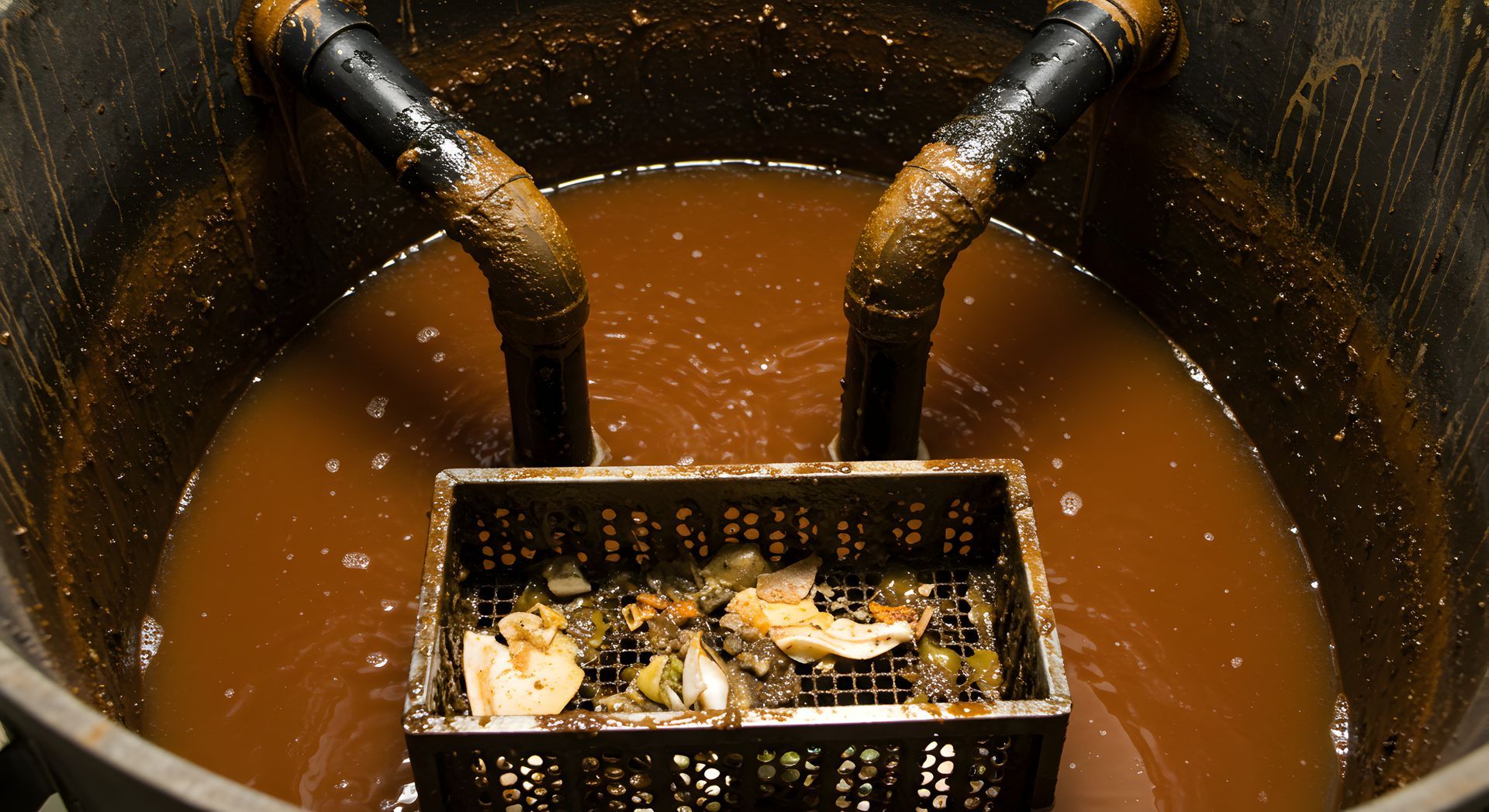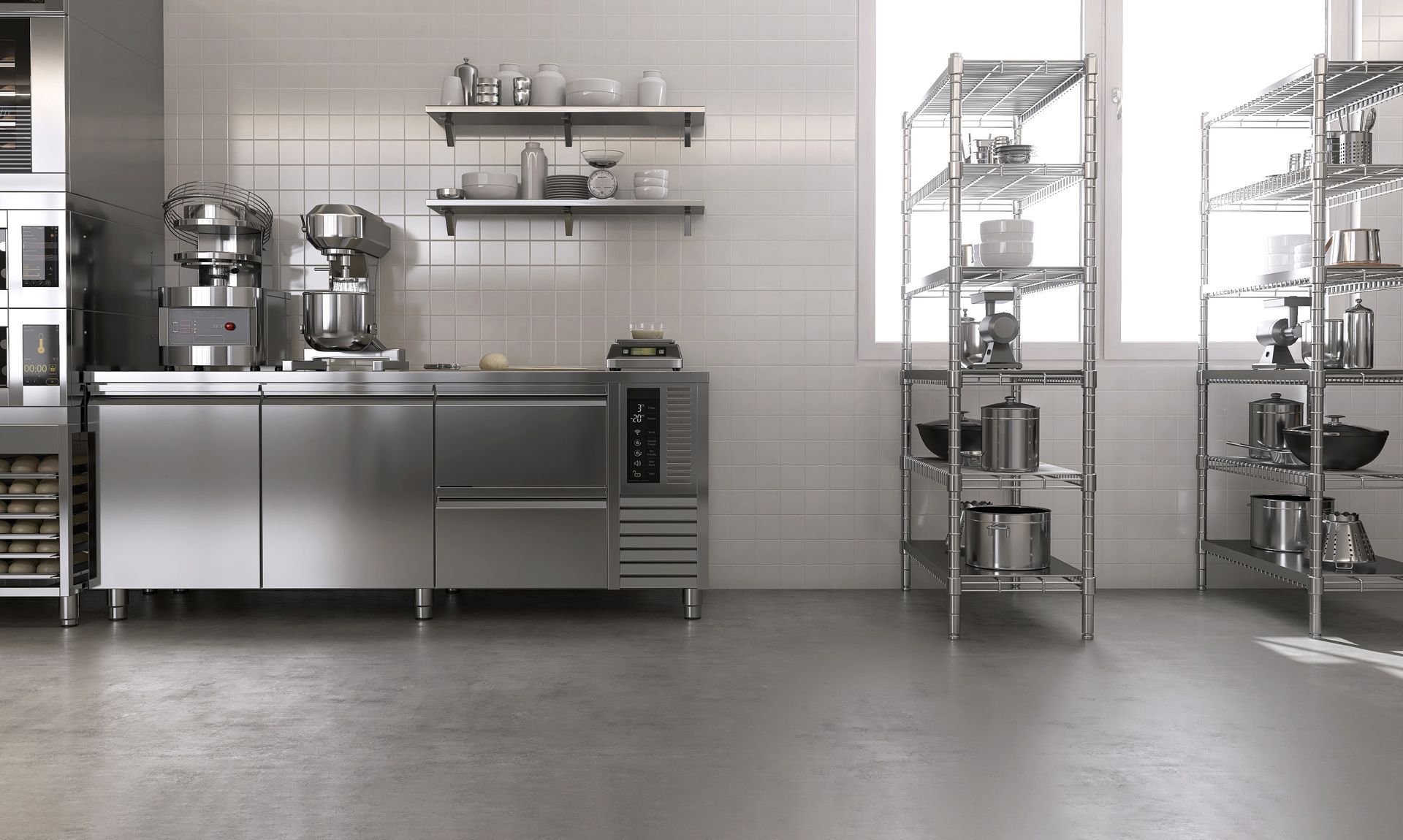Can Grease Interceptor Solids Strainers and Screens Reduce the Need for Early Pump-Outs?

One of the most common frustrations with commercial grease interceptors is how quickly they fill with food solids.
Interceptors are designed to separate fats, oils and grease (FOG) from wastewater, but when solids enter the tank, they take up space, produce odors and force early pump-outs. This raises operating costs and increases the risk of backups.
Solids strainers and screens, when selected and maintained properly, can provide an effective line of defense to extend service intervals without compromising interceptor performance.
How Food Solids Drive Early Pump-Outs
Interceptors have limited capacity, and that space is supposed to be dedicated to grease separation and storage.
When chunks of food, starches or coffee grounds bypass sink strainers and settle in the tank, they displace volume that would otherwise capture FOG. As they break down, they release hydrogen sulfide and other gases, which create foul odors and contribute to corrosion. Facilities often end up scheduling pump-outs sooner than planned, not because the grease layer has reached compliance limits, but because solids have overwhelmed the unit.
Options for Straining and Screening
Several approaches exist to reduce solids loading before wastewater enters or exits the interceptor:
- Sink drain baskets:
A first line of defense at the fixture. These catch large scraps before they enter the plumbing system. While simple, they require kitchen staff to consistently empty and clean them.
- Inlet baskets:
Installed inside the interceptor where the influent line discharges. These capture suspended solids before they can settle at the bottom of the tank.
- Outlet screens: Mounted at the discharge end of the interceptor. These prevent solids from leaving the tank and traveling downstream, protecting sewer lines from clogs.
- External solids interceptors: Standalone units installed ahead of the grease interceptor. They are designed specifically to capture food waste and can be sized to handle high-volume kitchens.
Extending Pump-Out Intervals and Reducing Issues
When solids are captured before or within the interceptor, the overall maintenance burden drops significantly. Facilities can benefit in several ways:
- Longer pump-out intervals: With less solid waste displacing tank volume, grease capacity is preserved, allowing pump-outs to stay on a predictable schedule.
- Fewer downstream service calls: Outlet screens and solids interceptors prevent food particles from traveling further into the sewer system, reducing clogs and emergency calls.
- Odor control: By limiting decomposition of organic solids inside the tank, odors are minimized, helping prevent unpleasant smells from reaching dining areas or drifting into the parking lot.
Matching Strainers and Screens to Interceptor Type
Not every device is suited for every type of interceptor. Selection should take into account design and flow characteristics:
- Gravity interceptors: Large, in-ground tanks often benefit from external solids interceptors or larger inlet baskets, since they handle significant flow and volume. Outlet screens are also common, as they prevent solids from escaping into long sewer laterals.
- Hydromechanical interceptors: These smaller, often indoor units are more sensitive to flow restriction. Adding a screen with too much headloss can reduce separation efficiency. Inlet baskets and properly sized outlet screens can be effective, but mesh selection must match the flow rating.
Selection Criteria
When evaluating solids strainers and screens, a few key specifications determine long-term effectiveness:
- Mesh size: Finer mesh captures more particles but can clog quickly. A balance must be struck between capture efficiency and ease of cleaning.
- Temperature tolerance:
Hot wastewater from dish machines can warp or degrade lower-quality plastics. Stainless steel or high-temperature polymers are preferable.
- Chemical compatibility: Harsh cleaners or sanitizers can shorten the lifespan of some screen materials.
- Retrofit vs. factory fit: Some interceptors can be equipped with aftermarket baskets and screens, while others perform best with factory-engineered accessories designed for their specific model.
Maintenance Expectations
Strainers and screens require ongoing care to deliver results:
- Fixture baskets: Kitchen staff can empty and rinse these daily.
- Inlet baskets and outlet screens: Depending on volume, these may need weekly to monthly cleaning. Some can be handled by staff, while others require service during scheduled interceptor maintenance.
- External solids interceptors: These typically require professional servicing on a set schedule, often coordinated with grease trap cleaning.
Regular checks are critical. Neglected strainers can clog, causing backups that are just as disruptive as an overloaded interceptor.
Protecting Your Grease Management Investment
Solids strainers and screens are not a substitute for pump-outs, but they can significantly extend the time between them, cut odor complaints and protect downstream lines. For busy kitchens, they are a cost-effective upgrade that reduces the frequency of disruptive grease trap maintenance service calls. The key is choosing the right combination of devices and maintaining them as part of a larger grease management program.
Thoroughly Cleaning Inlet Baskets, Outlet Screens and External Solids Interceptors Is a Key Part of Reliable Grease Trap Service
Adding strainers and screens helps reduce early pump-outs, but no device eliminates the need for professional grease trap service. Southern Green Industries provides dependable grease trap cleaning and servicing throughout Atlanta, ensuring your system works as intended and your business avoids costly downtime.
Call (404) 419-6887 today to schedule service and keep your interceptor performing at its best.
Recent Blog Posts
Contact us Today for a FREE Quote
We are committed to making grease trap cleaning and fryer oil recycling as clean and easy as possible. If you’d like to learn more about our services or get a quote, give us a call at (404) 419-6887.



